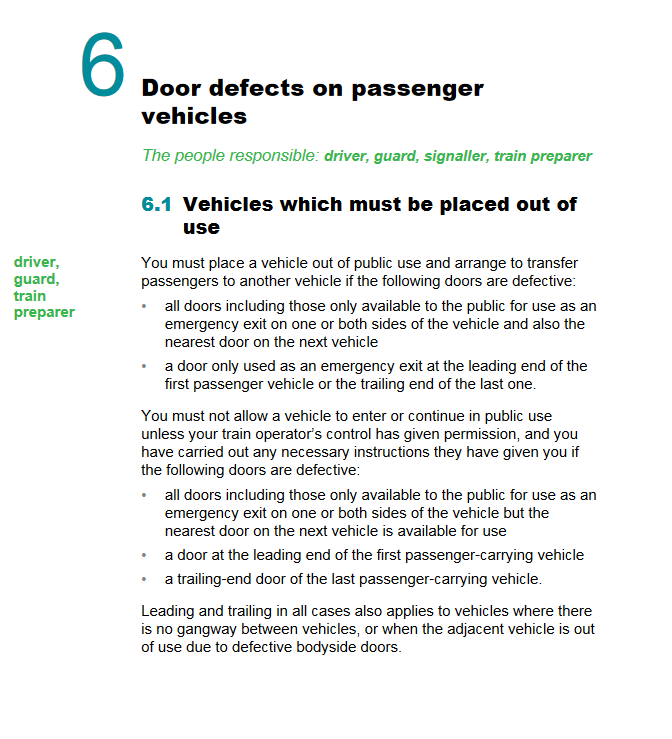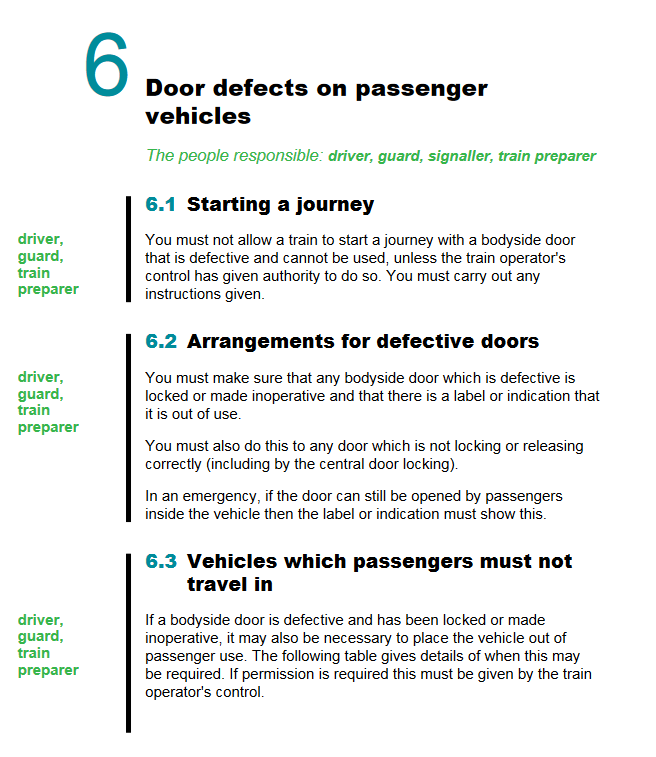Intermodal
Established Member
The rules regarding doors out of use in TW5 S6 have changed, coming into force on Saturday.
Previously the rules were this:

The new rules are as follows:


Am I interpreting this correctly that there is now no requirement for authorisation should the leading door of a vehicle be locked out of use as long as it is not followed by another door out of use on the same side of the train?
For example on a standard 2 coach multiple unit, with 4 doors each side and no cab doors, previously authorisation would be required to lock off the leading or trailing doors on either side. As far as I can tell this is no longer the case as it only states that "Door closest to the end of a vehicle with no passenger access to another vehicle" must be out of use - it doesn't say that the passenger access must be by the door - so presumably it only applies to one coach units or locked off coaches.
If anyone can share their view I would be interested to read it.
Previously the rules were this:

The new rules are as follows:


Am I interpreting this correctly that there is now no requirement for authorisation should the leading door of a vehicle be locked out of use as long as it is not followed by another door out of use on the same side of the train?
For example on a standard 2 coach multiple unit, with 4 doors each side and no cab doors, previously authorisation would be required to lock off the leading or trailing doors on either side. As far as I can tell this is no longer the case as it only states that "Door closest to the end of a vehicle with no passenger access to another vehicle" must be out of use - it doesn't say that the passenger access must be by the door - so presumably it only applies to one coach units or locked off coaches.
If anyone can share their view I would be interested to read it.
